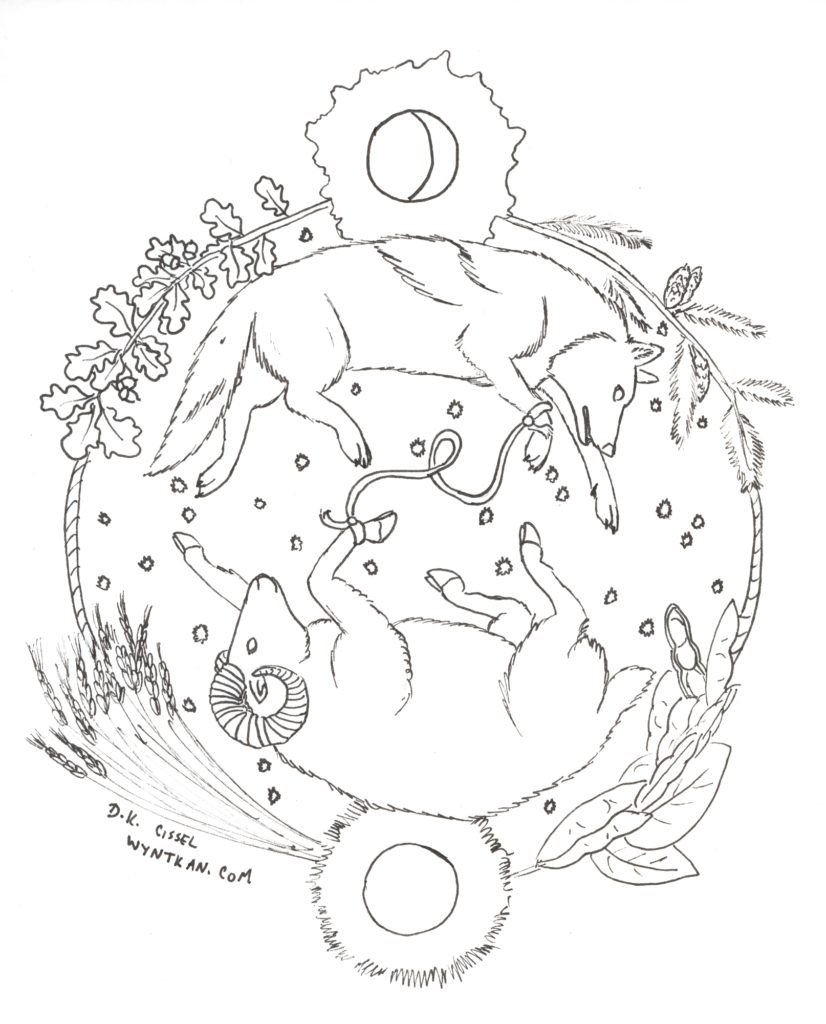
So far my coloring pages have largely been little slices of various ecosystems. This time I wanted to try something a little more allegorical in nature. I was thinking about wild and domestic animals and how they’re linked together. Domestic animals have been selected over thousands of generations for certain traits that humans prefer, but these traits are still rooted in millions of years of wild evolution. Even the most sedate of domestic animals still relies on instincts and behaviors found in their wild counterparts and forebears. Wild animals, on the other hand, are bound to domestic animals through us, and specifically how we try to control the wild to make space for our livestock and pets. The most ethical farmers are those who try to maintain wildlife habitat amid and even within the spaces they reserve for their domestic animals, but many more simply kill whatever native wildlife happens to inconvenience them. Domestic vertebrates account for much more biomass than wildlife across the planet, testament to how much we’ve changed our home.
In the same way, our crops have taken over massive amounts of acreage that was once the sole province of native wild plants. Wheat and soy are shown here, though corn is also up there in how much space it consumes, to say nothing of water. Meanwhile demand for farmland and timber has eaten up huge swaths of forested land and prairies, such as oak savannas. It can take decades, if not centuries, for land to recover from intensive industrial farming practices.
It is not the fault of the ram, the wheat or the soy, though; they were put here by us. Instead, it is our responsibility to rein in our avarice, and to make better and more efficient use of the resources we have, rather than over-producing and letting a quarter of it go to waste, often before it ever makes it to the consumer.
I wanted to represent that connection between the wild and the domestic in this piece, and I hope you enjoy giving it some color! You are more than welcome to share it with others, and print out multiple copies for non-commercial use. I’d love to see what you do with it, and you can email me at wyntkan(at)gmail(dot)com.
Species portrayed: gray wolf (Canis lupus), domestic sheep (Ovis aries), Sitka spruce (Picea sitchensis), English oak (Quercus robur), wheat (Triticum aestivum), soybean (Glycine max)
